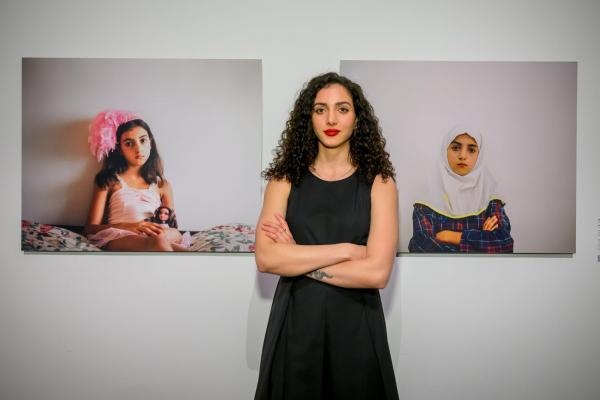Women Defining Women in Contemporary Art of the Middle East and Beyond, currently on view at LACMA, presents 75 works by women artists across several generations who were born or live in what can broadly be termed Islamic societies, presenting powerful narratives from Africa to Western and Central Asia to diasporic communities around the world. Though the stories of the artists and the people in their work could fill volumes, we were fortunate to hear directly from three women—Romina, Alae, and Iman—who are depicted in photographs taken by Iran-born photographer Newsha Tavakolian and Lebanon-born photographer Rania Matar, providing a unique insight into the artistic process and the times and places these photos were taken. Read their words below.
Romina
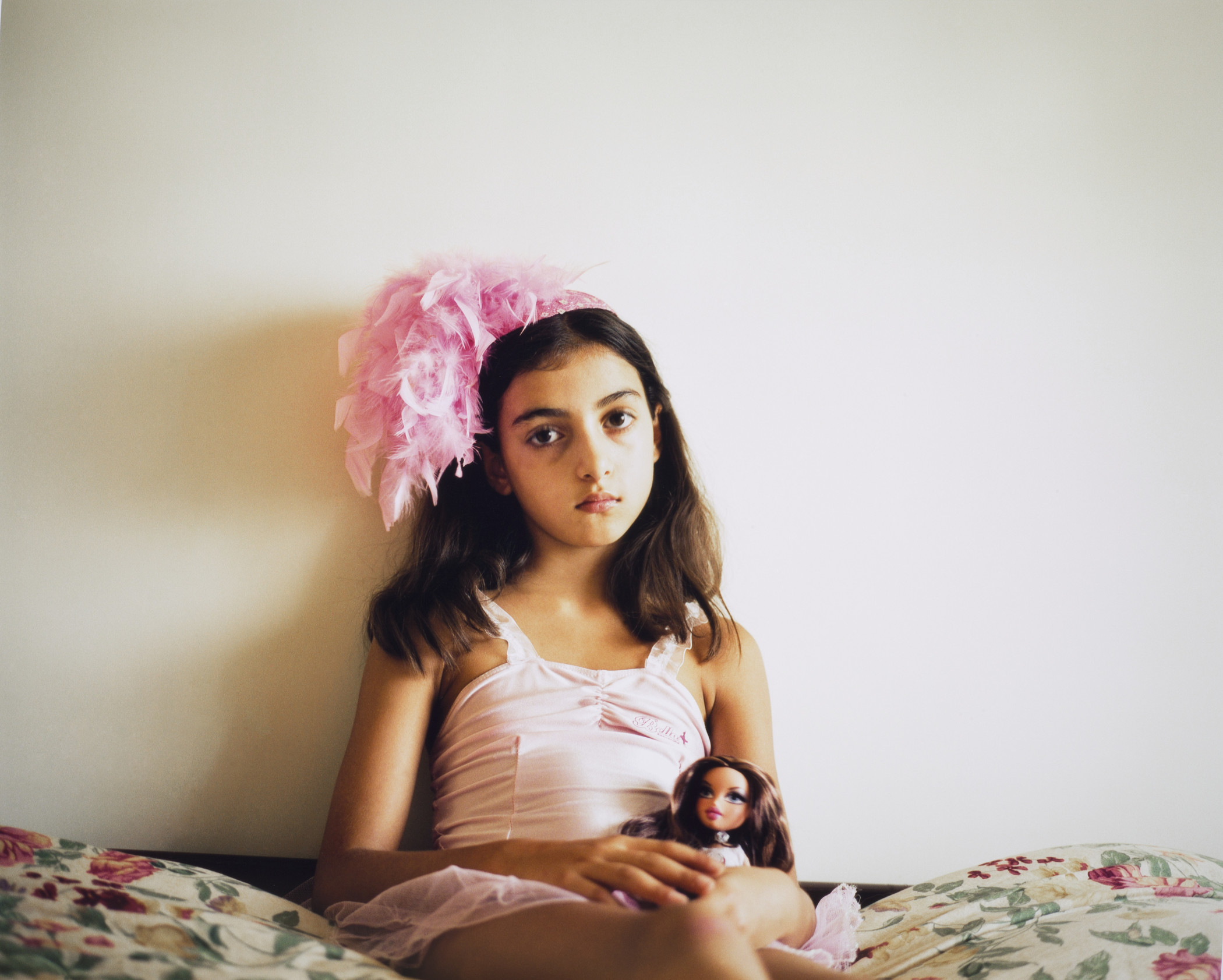
When I see these pictures, I think of all the times I watched Newsha set up certain scenes for her photography projects. I always wanted to somehow get involved and “model.” My idea of modeling was all about looking pretty and wearing beautiful clothes. But when Newsha would decide to use me as her model, I was always confused and irritated with how she wanted me to look like my normal self and not like I imagined. At the time, I was too young to fully grasp the concepts behind the projects but now looking back, I have a better understanding of the emotions and ideas she was trying to convey with her pictures.
These two pictures specifically remind me of the time I still lived in Iran and went to elementary school there. I remember how I had recently been in a car accident around the time those pictures were taken and had an eye socket injury that bruised my face. I remember being grumpy a lot during that time, my face would always show all my emotions. So, I guess, that was a great opportunity for Newsha to have me model for her The Day I Became a Women project. It was also around the time of my Jashn-e taklif [Obligation Ceremony]*, which I never fully understood as a child. It felt like a forced celebration that I had no interest in. I knew my school wanted to make it a big deal, but personally, it felt weird for me to think about becoming a woman when I was not done being a child yet.
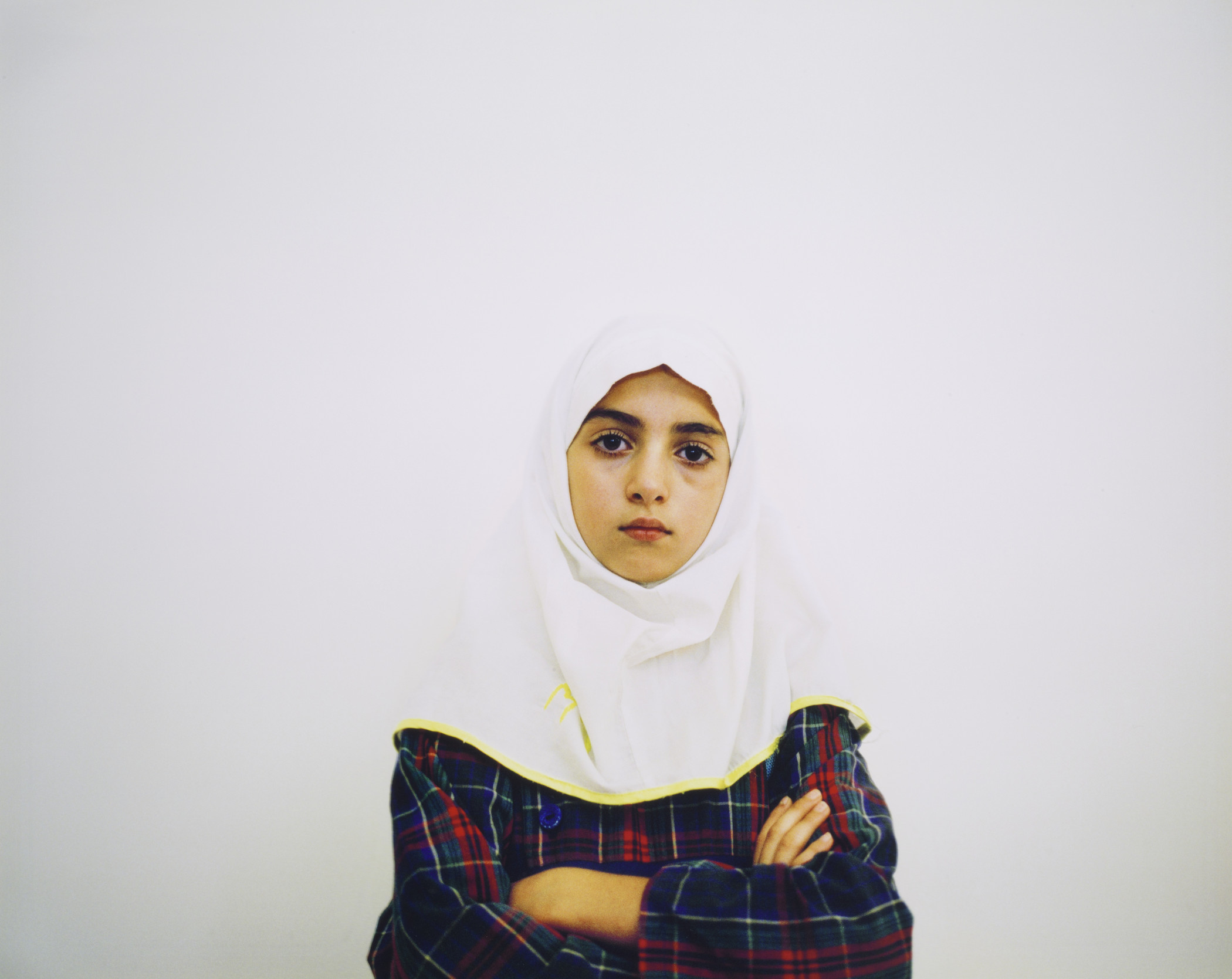
The moment the picture was taken of me in my school uniform, I remember being annoyed with how tight my maghnaeh—which covers our hair—was around my face. The maghnaeh fits with an elastic band around the face and is a part of our school uniform along with the manteau, a loose gown that covers our arms, body, and part of the legs. I remember, every morning, I would rip my maghnaeh a little bit to make it more comfortable before leaving for school. Then my grandma would have to sew it back because my school would complain about it being ripped. It was an ongoing battle. But the one thing that made me happy was knowing my aunt wanted me to be involved with her work, the thing she spent so much of her time and effort on. It made me feel important and valued more than just being the little kid in our family.
With the other picture of me, sitting on the bed, in my Barbie outfit with my Bratz doll, I felt more like myself. I was just playing with my new toy and costume, completely consumed with my own world, then my aunt asked me to just sit still and take my picture. Even though I felt happy, I still didn’t want to smile in the picture.
*Taklif also means puberty, and on this occasion 9-year-old girls are officially recognized as religiously mature and accountable before the law, which includes wearing hijab. This custom was instituted in Iran after the 1979 Islamic Revolution.
Alae
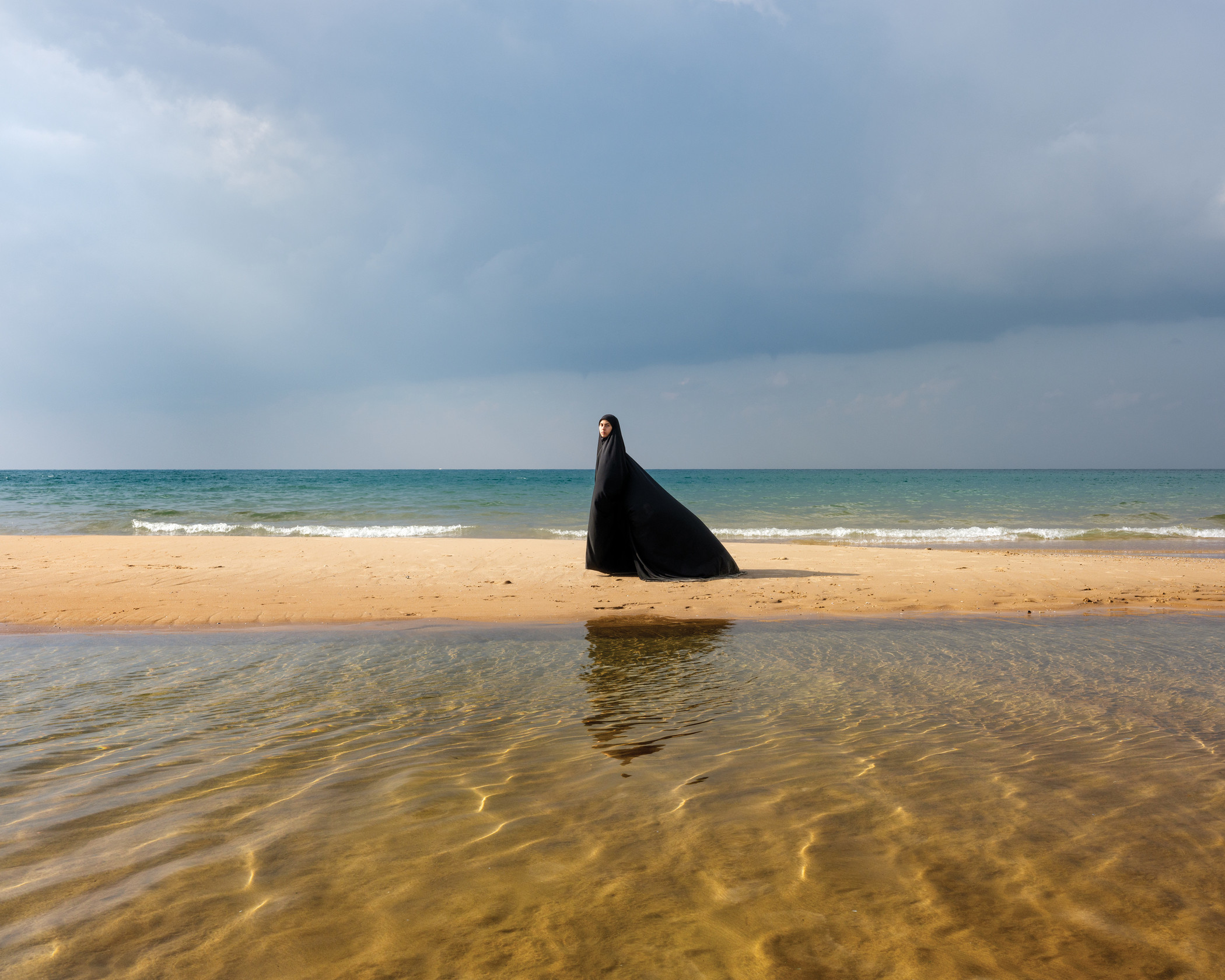
My photos traveling the museums of the world makes me feel that I, myself, am traveling the world through my soul, as an absent text in the mind of every viewer. Rania impressed me with the professionalism of her photography and the way she presented my clothes, which are unusual in Western countries, to introduce a new and unfamiliar style, different to what they are used to. Art is absolute and is not bound by thought, or religion, or region, but rather roams the world, seeking for someone to adopt it with eagerness and need.
Alae's response was translated by Sarah Mostafa Ahmed.
Iman
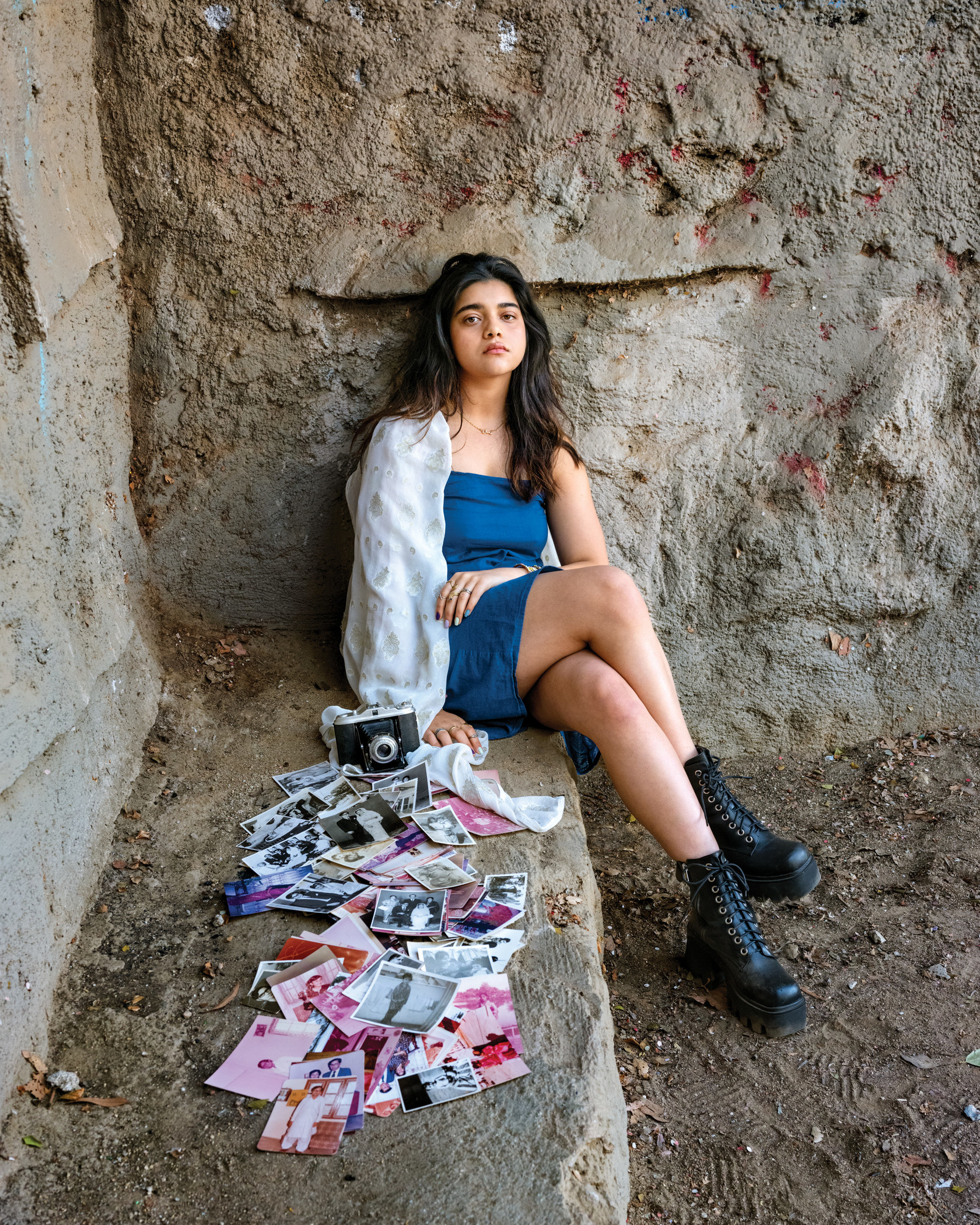
Working on this shoot with Rania was an absolute treat! Photo shoots have never been something I was a big fan of. I always feel insecure of my body or my looks or if I’m the right person for the job. My mind is always speeding through a long list of what ifs. It’s weird because I spend all my working days acting in front of a camera, so still photography shouldn’t be so different. I should be used to it is what I keep telling myself. But then the shutter clicks, and my anxiety comes back. There’s no character or costume to hide behind, it’s just me and I think that vulnerability is the scariest part.
The narrative behind Women Defining Women and Rania’s enthusiastic vision were an immediate draw for me. I was asked not only to be the subject but also a collaborator! I showed off some old photos that my grandfather (from my mom’s side) took, and right away we knew we had to incorporate them into the shoot. It was quite surreal because something about sorting through photos of my mother and watching her grow up and becoming a woman in these images, made me feel a lot closer to her in a way I don’t really know how to explain. I’m just grateful to Rania for making me feel heard and allowing me to share a very personal part of myself through this creative outlet in a space that was safe and relaxed.
Women Defining Women is on view at LACMA in the Resnick Pavilion through September 24, 2023.



